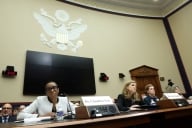You have /5 articles left.
Sign up for a free account or log in.
My colleagues and I returned from the holiday break this year to learn that an ad for one of our programs was appearing on a controversial website. Needless to say, some choice swear words were uttered and we got the ad agency, who recently partnered with one of our schools, on the phone. The ad was swiftly removed, but the agency hadn’t made a buy on that particular site. So how did it end up there?
The Long and Short of Programmatic Advertising
The short answer is that it was a programmatic ad buy. The long answer is a bit more complicated.
Programmatic advertising is buying that’s done using an algorithm on an ad network or exchange using real time bidding. It begins with an audience and a goal in mind — a click, a sign-up, additional page views —and it allows your ad to appear on a multitude of sites within your budget. The term “programmatic” itself seems to refer to the computer program, the algorithm.
Mark Lenz, Fordham’s new director of client services, has more than 16 years of agency experience. In that time, he has seen programmatic advertising become the cornerstone of resource-strapped, ROI-focused highered campaigns.
“A programmatic buy is more cost effective because the algorithm looks across a network’s entire ad inventory for the best value to achieve the best results,” he explains. He admits that this is not an easy concept to grasp.
“Clients don’t always understand that they are not really buying an ad,” he points out. “They are buying an audience and a behavior.”
Back to our little incident then. When engaging in programmatic advertising, how do you protect your institution to ensure that you land in brand-safe environments?
The Importance of Blacklists and Negative Keywords
Your first line of defense is specifying what categories of sites and content are unacceptable. Display networks categorize domains by audience, content, and type. For instance, Google Display Network lists categories of sensitive content, i.e. death and tragedy, sexually suggestive; profanity and rough language; and types of sites, i.e. gambling; forums; error pages. “Not yet labeled” is also an important category exclusion, meaning the site or content is so new that Google has yet to evaluate it.
Second, use a blacklist to record the domains you want to avoid. Going beyond risky content, a blacklist can be used to weed out sites that don’t align with your brand values, and sites that perform poorly because your brand and their content are incongruous.
“Blacklisting is an important part of your optimization process,” Lenz contends. “The programmatic algorithm learns over time what opportunities are most likely to convert, what time of day, what device, what geography, and optimizes itself, to a point. You can aid the optimization effort by blacklisting sites that do badly."
Lastly, you’ll want an exhaustive list of negative keywords. These are words that no matter the category, no matter the site, you don’t want your ad appearing alongside. Many ad agencies have a standard list of negative keywords, but you’ll want to customize it to correspond with your affiliations.
At Fordham University, we revisited our blacklist and our negative keyword list, but the work is ongoing. Our biggest lesson was about coordination. If you’re working with more than one agency, or if individual schools and programs contract with buyers independent of the central marketing office, blacklists and negative keyword lists must be shared often.
Lenz maintains that when you’re buying programmatic, you’re buying performance, and we all could use better performance in our advertising initiatives. But it is not transparent to those of us sitting outside ad agencies, and it comes with some risks to our brands. Intentional or not, ads serve as an endorsement of the domain on which they appear, so while applauding higher click-thru-rates, we also need to reach out to colleagues in our schools and divisions to ensure that it is fully understood.
Donna Lehmann is the assistant vice president for marketing at Fordham University in New York City








